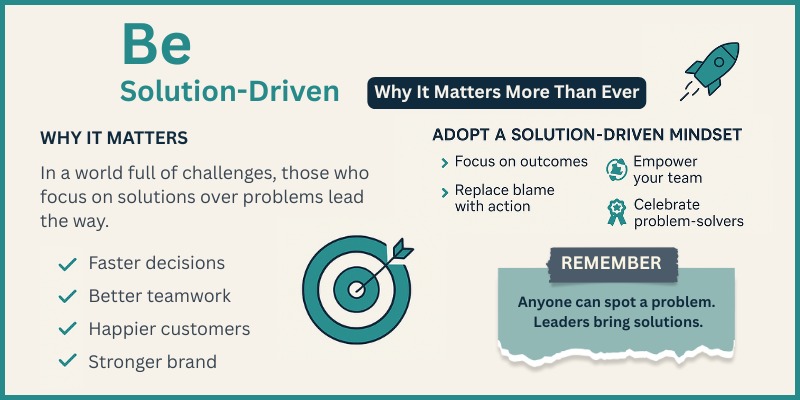Solution-Driven Approach: Why It Matters More Than Ever
Posted on July 1, 2025

Introduction
In today’s fast-paced world, challenges are constant—whether in business, technology, or everyday life. That’s why being solution-driven is more important than ever. It’s not just about pointing out problems; it’s about focusing on how to fix them.
What is a Solution-Driven Approach?
A solution-driven approach means shifting your mindset from "what's wrong" to "what can we do about it?" It’s about finding answers, creating opportunities, and taking action—rather than dwelling on obstacles.
Why It Matters Now More Than Ever
1. Faster Decision-Making:
With tighter deadlines and more complex issues, solutions need to be found quickly. A solution-driven mindset helps teams act fast and stay focused.
2. Stronger Team Morale:
Constantly discussing problems drains energy. Focusing on solutions motivates people and creates a culture of progress.
3. Customer-Centric Thinking:
Customers don’t care about your internal problems—they want results. Being solution-oriented helps you meet their needs faster and better.
4. Competitive Edge:
In a crowded market, companies that solve problems effectively stand out. A solution-driven approach sets you apart.
How to Adopt a Solution-Driven Mindset
1. Start with the outcome in mind.
What do you want to achieve? Work backwards from there.
2. Encourage ownership.
Empower your team to come up with ideas and take action.
3. Replace blame with curiosity.
Instead of asking “Who messed up?” ask “What can we learn?”
4. Celebrate problem-solvers.
Recognize and reward people who bring solutions, not just point out problems.
Final Thoughts
Problems will never go away—but how you respond to them makes all the difference. A solution-driven approach is more than a strategy. It’s a mindset that drives growth, innovation, and success—especially in times of uncertainty
FAQs
1. What is a solution-driven approach?
It’s focusing on fixing problems, not just pointing them out.
2. Why does it matter today?
It helps you act fast, stay positive, and stay ahead.
3. How does it help teams?
It boosts morale and encourages collaboration.
4. How can I adopt it?
Set clear goals, empower others, and reward problem-solvers.
5. Does it help in business?
Yes—it builds trust, speed, and a competitive edge.

